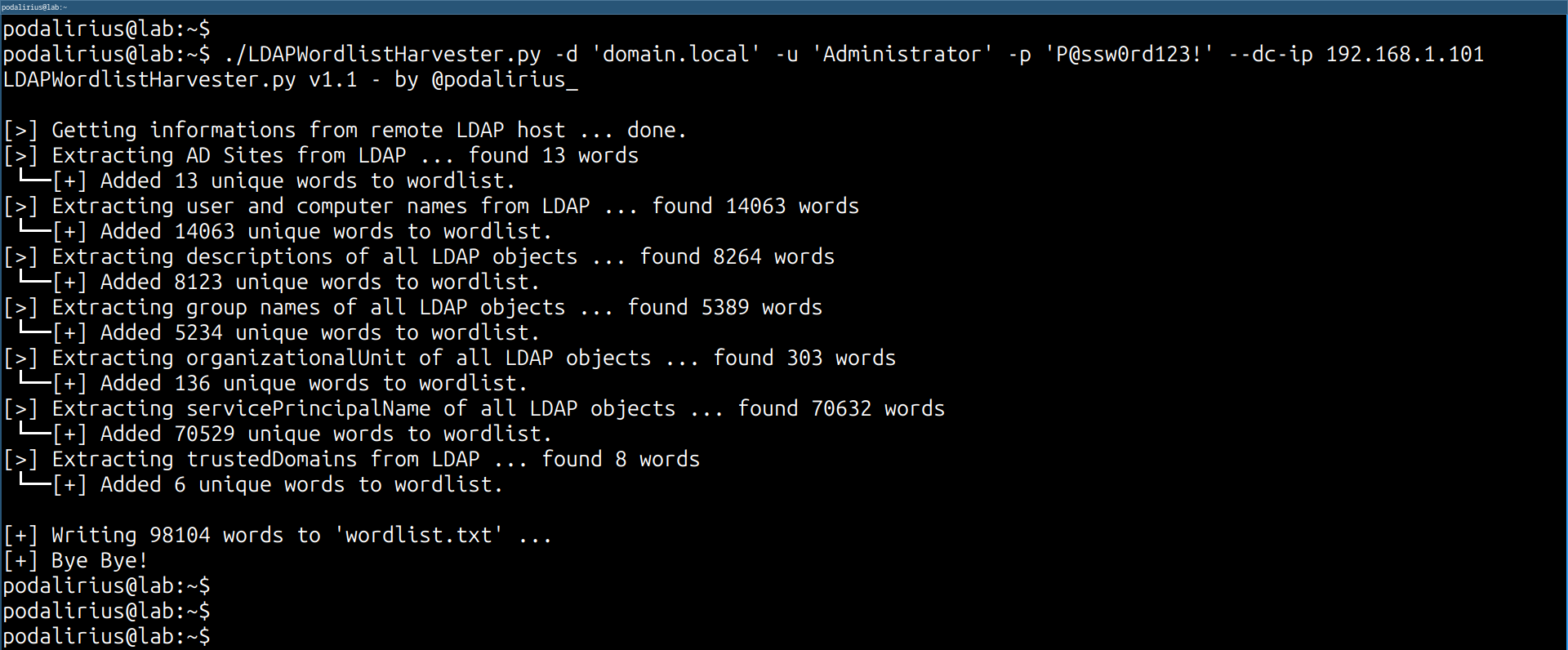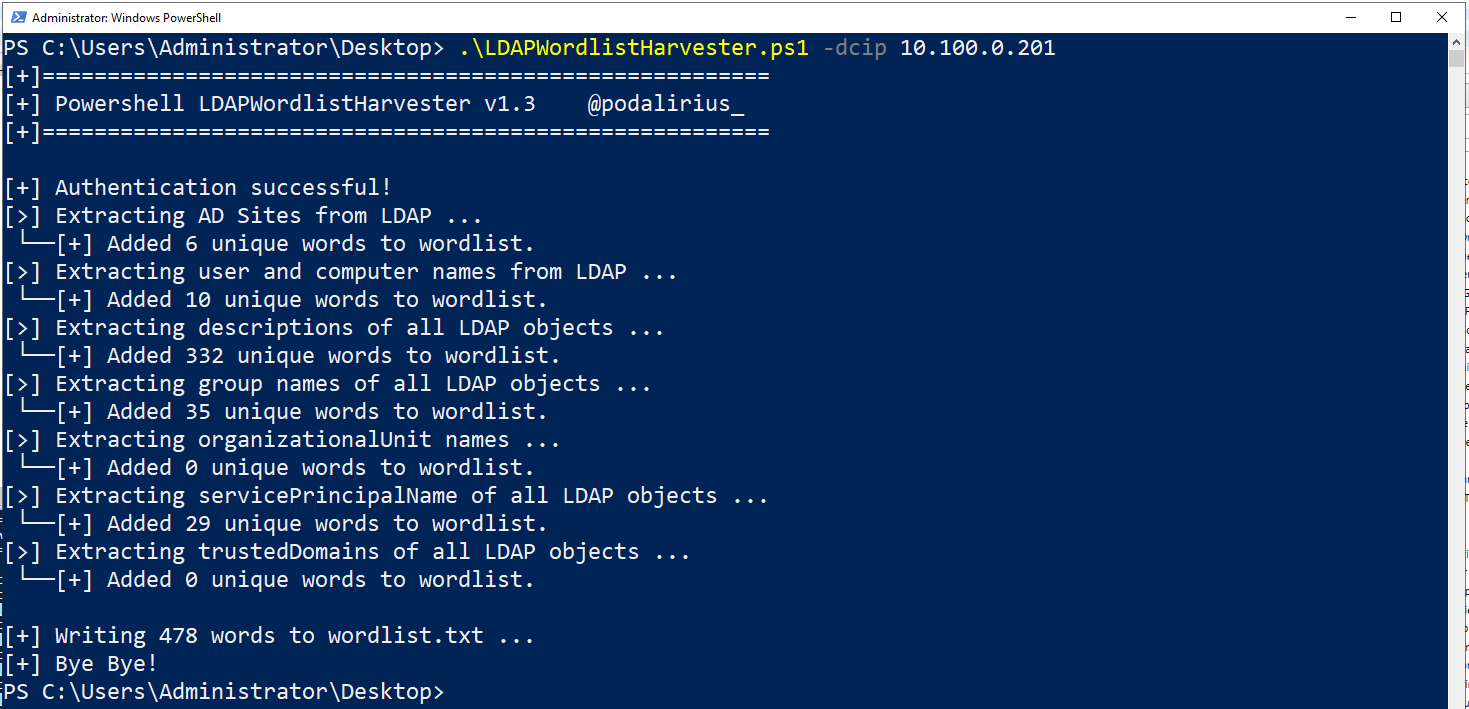A tool to generate a wordlist from the information present in LDAP, in order to crack non-random passwords of domain accounts.



The bigger the domain is, the better the wordlist will be.
- Creates a wordlist based on the following information found in the LDAP:
- User:
nameandsAMAccountName - Computer:
nameandsAMAccountName - Groups:
name - Organizational Units:
name - Active Directory Sites:
nameanddescriptions - All LDAP objects:
descriptions
- User:
- Choose wordlist output file name with option
--outputfile
To generate a wordlist from the LDAP of the domain domain.local you can use this command:
./LDAPWordlistHarvester.py -d 'domain.local' -u 'Administrator' -p 'P@ssw0rd123!' --dc-ip 192.168.1.101
You will get the following output if using the Python version:
You will get the following output if using the Powershell version:
Once you have this wordlist, you should crack your NTDS using hashcat, --loopback and the rule clem9669_large.rule.
./hashcat --hash-type 1000 --potfile-path ./client.potfile ./client.ntds ./wordlist.txt --rules ./clem9669_large.rule --loopback
$ ./LDAPWordlistHarvester.py -h
LDAPWordlistHarvester.py v1.1 - by @podalirius_
usage: LDAPWordlistHarvester.py [-h] [-v] [-o OUTPUTFILE] --dc-ip ip address [-d DOMAIN] [-u USER] [--ldaps] [--no-pass | -p PASSWORD | -H [LMHASH:]NTHASH | --aes-key hex key] [-k]
options:
-h, --help show this help message and exit
-v, --verbose Verbose mode. (default: False)
-o OUTPUTFILE, --outputfile OUTPUTFILE
Path to output file of wordlist.
Authentication & connection:
--dc-ip ip address IP Address of the domain controller or KDC (Key Distribution Center) for Kerberos. If omitted it will use the domain part (FQDN) specified in the identity parameter
-d DOMAIN, --domain DOMAIN
(FQDN) domain to authenticate to
-u USER, --user USER user to authenticate with
--ldaps Use LDAPS instead of LDAP
Credentials:
--no-pass Don't ask for password (useful for -k)
-p PASSWORD, --password PASSWORD
Password to authenticate with
-H [LMHASH:]NTHASH, --hashes [LMHASH:]NTHASH
NT/LM hashes, format is LMhash:NThash
--aes-key hex key AES key to use for Kerberos Authentication (128 or 256 bits)
-k, --kerberos Use Kerberos authentication. Grabs credentials from .ccache file (KRB5CCNAME) based on target parameters. If valid credentials cannot be found, it will use the ones specified in the command line


